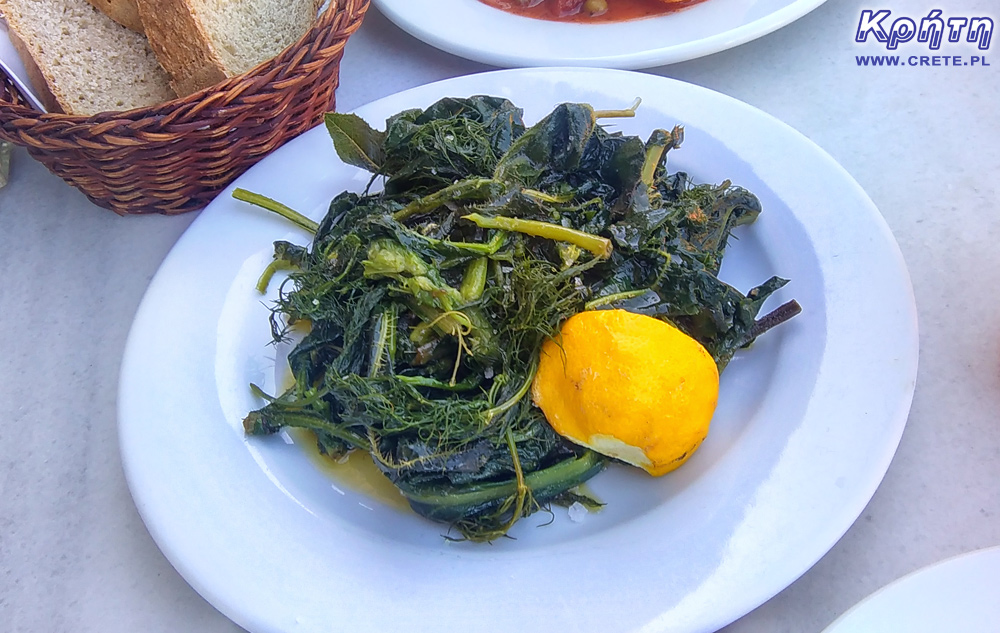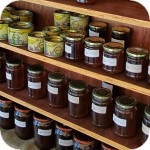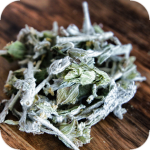
We are not surprised by the fact that many plants growing in Crete have healing properties. In the pages of our site we have written many times about the unusual properties of malotiry, dictamus, purge or oregano. This time, we read that the scientists took another Cretan endemic plant under the microscope. Stamnagathi is a chicory variety growing in the wilderness of the Omalos plateau and the White Mountains. Currently, it is also grown by some garden farms.

The University of Sheffield and the Cretan Institute of Nutrition, which studied the properties of this wild plant, have come to interesting conclusions. One of the most important is that it lowers the level of glucose in the blood. Thanks to its hypoglycemic properties, it can be used to treat and prevent the development of diabetes. Researchers also noted the beneficial effects of this plant on human cognitive mechanisms such as memory or attention. Interestingly, this plant was an important part of the diet during the German occupation.
Researchers decided to use the health-related features of stamnagathi and to create a medicine based on it that contains all its properties. This pill, already known as Glucospin, has not yet been marketed due to the ongoing drug registration procedure. The Glucospin manufacturing company must comply with the international regulations governing the production of medicines, so a number of bureaucratic requirements are still met.
As we wrote above, this plant occurs mainly in the mountainous regions of Crete located above 1000 m above sea level. Due to the atmospheric conditions there, stamnagathi is therefore very resistant to low temperatures and snow. Its healing properties have been known since ancient times, for example, Aristophanes, Theophrastus and Dioscoridess.
A slightly bitter taste, which some people may disturb slightly, is rewarded by the valuable properties of this plant. Modern analysis of its composition shows the content of polyphenols, omega-3 fatty acids, vitamins and many other valuable micronutrients. Their occurrence has a direct impact on the stimulation of the immune system, antioxidant, disinfectant, prevention of rheumatism, heart disease. This plant also has properties that support digestion and also, as described above, has hypoglycaemic properties. Earlier studies conducted at the University of Lancaster also indicate that eating stamnagathi can reduce the negative effects of stress.
Stamnagathi is still a component of the modern diet of the Cretans. It is usually cooked with a little olive oil and lemon juice. It can be found in taverns where it appears as so-called. horta. It is worth remembering that under this name also other green edible plants are served. Depending on the time of year and the place where you order this dish, horta can be cooked on the basis of various plants.
Anyway, research, research and for the inhabitants of the island boiled stamnagathi leaves are, among others, a remedy for abdominal pain, kidneys or liver, as well as a condition for long life and well-being.

Since 2000, the Institute of Mediterranean Agriculture in Chania has conducted regular research, the main purpose of which is to determine the quality of honey produced in Crete. Currently, the amount of honey examined has been increased to around 500 samples, the vast majority of which comes from Crete.

We have been writing about the health-promoting properties of the Mediterranean diet on our website many times. So far, various types of scientific studies have pointed mainly to the links between the Mediterranean diet and the smaller incidence of specific diseases. However, the results of the research recently published by the Annals of Internal Medicine also show the beneficial effects of this diet on better quality of health after the age of 70.

If you are going to Crete for the first time, be prepared for the explosion of real flavors and aromas. Cretan vegetables and fruits are fresh and full of flavor, while wild herbs that smell in the air, emphasize the taste of simple dishes with their intense aromas.
Komentarze
komentarz z
niestety wszystko zmienia się na niekorzyść konsumenta, nawet na Krecie- stamnagathi w większości juz pochodzi z uprawy, a dzikorosnace to naprawde rzadkosc i rarytas. Poniewaz jest to droga "chorta" i uwazana za menu z wyzszej półki, dlatego tak chetnie sie ja uprawia w taki oto sposob, gdzie jak widac az roi się od materialow z plastiku i pewnie tez od nawozow sztucznych.... pozdrawiam :-)
komentarz z
Stamnagathi to cichorium spinosum, a cykoria podróżnik to cichorium intybus. Są prawie identyczne.
Wypełnij poniższy formularz aby dodać komentarz
lub kliknij w poniższy link aby skorzystać z możliwosci komentowania przez facebooka:
https://www.facebook.com/crete.poland/posts/10154079259717551